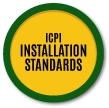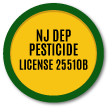 Tree & Shrub Mulching in Stewartsville, NJ
Tree & Shrub Mulching in Stewartsville, NJ
Mulching has proven to be significantly beneficial to the healthy establishment of young trees and shrubs and is now considered a standard part of planting and post-planting care. Mulch has many benefits including the conservation of moisture in the root zone, insulation of roots from temperature extremes, reduced weed and turfgrass competition, addition of organic matter to the soil and prevention of “mower blight” (the damage caused to trunks and stems from mowers and string trimmers). Contact us at Sunshine Tree & Landscape in Stewartsville, NJ to learn more about mulching, bed edging, hardscaping, and more!
How and Why Mulching Should be Done
- Only organic mulches such as wood chips, wood shredding, bark and leaf matter should be used. Non-organic mulches like gravel, white rock or lava rock provide no benefits to plants but and often used.
- Mulch should be applied in a layer no deeper than 2-4″ (see diagram). Mulch piled more deeply can cause the root zone to remain too wet and can also act as another layer of soil, thus causing roots to suffocate or conversely to grow into the mulch where they can quickly desiccate.
- Mulch should be kept away from direct contact with the trunk or stems.
- For individual trees, mulch rings should extend at least to the drip line (canopy edge of the plant) and preferably four to five feet wide for the first few years after planting. As trees mature, this circle can be expanded as desired – perhaps using the drip line as the edge. As the circle expands, shade tolerant perennial plants can be incorporated in the mulch.
- For trees and shrubs planted close together, mulching should be done in mass – so that the entire group is mulched in one large bed. This significantly reduces mower conflicts.
- Mulching should be considered not a one-time effort but rather an ongoing process. Mulch should be reapplied every year or two, depending on how fast it breaks down.
- Weeds in a mulch bed should be removed by hand or only with very careful use of herbicides such as Roundup® that have very little soil activity.




